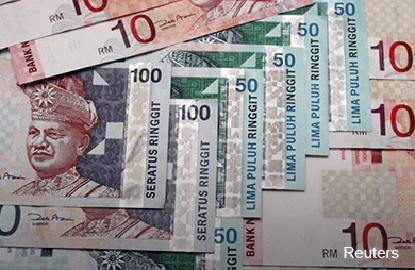

A weak ringgit did not help Malaysia’s export performance in the first half of the year, the latest economic data shows.
Despite the local currency’s depreciation against those of the country’s major trade partners in 1H2015, exports have not picked up pace, essentially due to an interplay of forces, such as falling commodity prices and demand.
In fact, statistics from the Malaysia External Trade Development Corporation show that Malaysia’s exports contracted in 1H2015.
For the six months to June 30, exports dropped 3.1% to RM368.33 billion while imports declined 2.6% to RM326.64 billion from the previous corresponding period. The trade surplus fell 7% to RM41.69 billion while total trade shrank 2.9% to RM694.98 billion during the period.
A closer look shows that it is the exports of Malaysia’s staple revenue earners that have underperformed. Petroleum products, crude petroleum and liquefied natural gas (LNG), which collectively made up 17.3% of total exports in 1H2015, led the decline, falling 28.9%, 23.5% and 25.5% respectively.
“A weak ringgit may not boost export competitiveness in the current global economic environment, given that commodity-dependent countries have also seen their currencies depreciating significantly and demand in the end destination markets for the country has remained relatively weak despite entering the 7th year of the current growth cycle,” says RHB Research Institute executive chairman and chief economist Lim Chee Sing.
CME Group senior economist Erik Norland says there will be a “fairly significant lag period” of 6 to 18 months before the positive effect of the ringgit’s decline can be seen in Malaysia’s export numbers. “You definitely will not see the benefits of a lower ringgit in 2015. The benefits will become apparent more in 2016 and 2017.”
Indeed, this is what happened in the 2008/09 global financial crisis, when the ringgit fell, albeit less sharply. Malaysia’s exports fell 16.7% year on year to RM552.5 billion in 2009 before rebounding 15.6% in 2010.
The worries about Malaysia’s external trade prospects, though, are not confined to its currency pains.
The 1H2015 export performance reveals how subdued commodity prices can punish Malaysian exports even as the ringgit falls. The prices of crude oil and crude palm oil have been falling and are now at their lowest levels since 2009. Brent crude has hit US$44.18 a barrel — a 57% slump from where it was just a year ago. Similarly, CPO is now trading at RM1,820 per tonne compared with RM1,996 at this time last year.
Worryingly, there is no end in sight to the collapse in commodity prices, more so when China, a major importer, is slowing down.
Norland says the commodity market “has not found its bottom” and believes crude oil could potentially drop another 10% to 15% before a slow and shallow recovery can be seen.
A big reason for the subdued prices is oversupply and swelling inventories caused by a rapid increase in production in response to the run-up in prices during the commodity super-cycle in the last decade. Plus, the supply of commodities is inelastic and the surplus takes time to clear itself from the ports and warehouses.
Mixo Das, strategist at Nomura Holdings Inc, Singapore, says: “Trees, mines and oil wells all produce for years or decades once set up. If the initial capital expenditure is completed, the running cost will still be below where most commodity prices are. Digesting new and upcoming supply will take time even if capex is halted at this point.”
With at least 23% of what it ships comprising commodity-related products, Malaysia will need more than a weak ringgit to compensate for the shortfall in income. Meanwhile, the country’s major trade partners themselves are grappling with shaky economic realities.
China has been Malaysia’s second largest export market since 2010. Its purchases have been growing every year since 2008. Though Malaysian exports contracted in 1H2015, those (mainly petroleum and electrical and electronics products) to China managed a y-o-y growth of 12.2%.
But China’s growth is stuttering. In the first seven months of 2015, its imports fell 14.6% y-o-y while its gross domestic product grew 7% in the second quarter — the slowest in six years. And with the recent devaluation of the yuan, there are suspicions that the worst is yet to come.
Meanwhile, Japan, which is Malaysia’s biggest LNG customer, is struggling to shake off a tepid economic recovery. On Aug 27, the Japanese government said consumer spending in the second quarter of the year was flat. Correspondingly, Malaysian exports to Japan fell 14% y-o-y to RM36.6 billion in 1H2015. With Japan looking for alternative energy sources, such as nuclear, biomass and wind, it would not be surprising if Malaysia’s LNG exports faltered in the future.
Granted, it may be too early to argue that a weak ringgit cannot buffer Malaysian exports against external headwinds. However, a market inundated with excess commodity supply and few takers as global growth slows gives Malaysia enough reasons to be nervous.
This article first appeared in digitaledge Weekly, on August 31 - September 6, 2015.